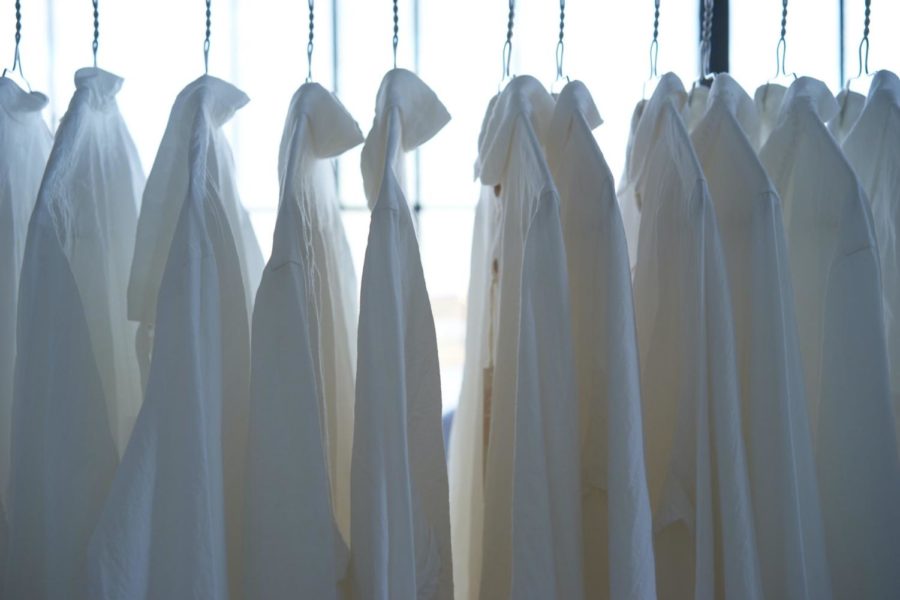Embarrass your ancestors and just wear white after Labor Day
September 2, 2021
The Labor Day weekend is approaching quickly, and the cautionary tale, “Never wear white after Labor Day,” is lurking among us. For generations, grandmothers and fashion magazines have issued the same warning fervently.
But why is it so bad to wear the color white after Labor Day, and where did this secret fashion code come from?
Some historians theorize that since historical fashion was heavy and unforgiving on hot summer days, people would wear white to keep themselves cool. Undergarments, crinolines, hoop skirts, corsets and dress lining are just some of the layers of clothing women were expected to wear in high society in the early 20th century.
Once Labor Day rolled around and signaled the official end of summer, the fashionable old money circles would hide away their white clothing and swap it out for more weather-appropriate looks.
This antiquity of a trend has a murky past too. Very rarely do people without loads of money get to swap out their summer wardrobes, let alone care about the color.
According to an article from Time, the color white was symbolic of wealth for many generations in America. If you wore white, you were not laboring or getting dirty. White was a color for people who could afford relaxation and summer getaways. Dark clothes meant sweat and work. Dark clothing could get messy and require less care and cleaning, making them better for the working class.
This rule stemmed from upscale communities in the 19th and early 20th centuries, but by the 1950s, it was mainstream for them and some middle-class circles, according to the Farmer’s Almanac.
The rule became a snobbish distinction between in-crowds and out-crowds. Upper crust fashion police would look at those wearing white in the “wrong” season and criticize their lack of appreciation for such important rules.
As time goes on, this rule is fading away. More and more fashion enthusiasts are finding ways to incorporate white into their everyday looks.
Even Coco Chanel, the notorious fashion designer, disregarded this American rule. She declared the color white as a wardrobe essential, no matter the season.
Whether you sport a white cable knit sweater, a fresh puffer coat or an essential pair of white sneakers, white has a place in many closets.
So the next time you hesitate to wear white after Labor Day, remember, fashion rules are meant to be broken, and sometimes, the rules are just plain trivial.







